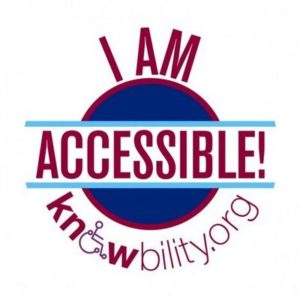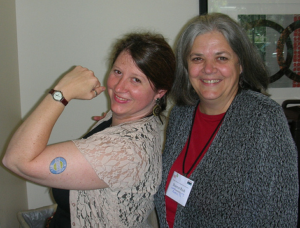 In honor of Anthony Bourdain, whose loss I still mourn, I read Kitchen Confidential: Adventures in the Culinary Underbelly for the first time. It’s a fantastic read – I highly recommend it. There’s a short section where he lists all of the wrong reasons to start a restaurant and a list of signs that a restaurant is in trouble, followed by a long narrative of his personal experiences at such failing restaurants. It got me thinking about what I’ve always considered the obvious signs of a nonprofit that’s in trouble and the wrong reasons to start a nonprofit, based on my what I’ve seen and experienced.
In honor of Anthony Bourdain, whose loss I still mourn, I read Kitchen Confidential: Adventures in the Culinary Underbelly for the first time. It’s a fantastic read – I highly recommend it. There’s a short section where he lists all of the wrong reasons to start a restaurant and a list of signs that a restaurant is in trouble, followed by a long narrative of his personal experiences at such failing restaurants. It got me thinking about what I’ve always considered the obvious signs of a nonprofit that’s in trouble and the wrong reasons to start a nonprofit, based on my what I’ve seen and experienced.
So I’ve spent several days thinking about it and making a list. Here it is:
The vanity project. This can be everything from I’ve always wanted to run a nonprofit, so I’m going to start one to my little precious snowflake got turned down from volunteering with a group he wanted to help so we’ve started a nonprofit in his name. These projects are all about the founder – the web site and any media articles are about the person who started the organization, how wonderful they are, or cute, or admirable – not about the clients served, the difference actually made. Many nonprofits are started by a dynamic someone with a particular vision, and I’m not at all saying that’s bad – it’s been my honor to work for some amazing visionaries. In fact, such a champion is often essential to a nonprofit getting off the ground. But when a nonprofit is mostly about the person who started it, you can bet that nonprofit isn’t going to be around long.
We have passion, not a business plan! A group of people feel passionately about trees. Or fish. Or homeless dogs. Or live theater. That’s terrific. That passionate group of people is essential for a nonprofit to be launched successfully and attract donors. But what’s also essential is an old-fashioned, text-to-paper business plan. What actual activities do you want to do in your first year and how much do you estimate that’s going to cost? How are you going to staff those activities? How are you going to ensure the safety of participants? How are you going to evaluate whether you’ve done what you said you would do and ensured you haven’t actually made things worse? What kind of facilities do you need to make all this happen? And you have to have at least a general plan for your first three years where you try to answer these questions as well.
We have a great idea that’s NEVER been done before! Yes, it has. In fact, there is a probably project like the one you are proposing already in your city or county, or online. You are so in love with your idea that you just cannot believe no one has thought about it before. So you announce it, launch it, and then are shocked when asked, “How is your project different from such-and-such?” Sure, you might get a lot of initial press over your “brand new” idea, from reporters who also didn’t do their homework and don’t know this initiative already exists somewhere. But those other established initiatives have an advantage over you: they were here before you, they learned from a litany of mistakes and misdirections you don’t know about, and they know how to avoid those now. They will be here when your idea isn’t so hot and new anymore and you go back to grad school. Here’s a better pitch: We have a great idea for something this community needs, and here is our extensive proof that it’s needed and how it’s different from other projects, along with why we can do this!
Our board of directors doesn’t give money, just ideas! Your board is fiscally responsible for this organization. The executive director reports to the board, who evaluates his or her performance. The board should know how to do that. Boards that don’t know how to do that are shocked when the executive director resigns and, whoops, the bank account is empty! The board should have a set amount of money they need to raise or give every year to the organization in order to keep their seat on that board. Also, how can your nonprofit ask for money unless your board members are showing leadership in donating themselves? If you just want their ideas, put them on an advisory board. If your board of directors isn’t providing a good percentage of your operational funds, either out of their own pockets or via their network of associates, your nonprofit isn’t going to last long.
Our first step: a high-profile fundraising event! So many nonprofits start with trying to find a celebrity to endorse their idea or trying to organize a big concert or even an entire music festival to launch their initiative. The organizers think that all you have to do is get your heart-wrenching letter or energetic pitch in front of some big movie star or music celebrity and, poof, that person is going to be calling you to say, “I have to be a part of this! How can I help?!” It doesn’t work that way. The landscape is littered with failed fundraising concerts – and even lawsuits that resulted from such. One of the parts of Loretta Lynn’s autobiography that doesn’t make it into the film based on that book is one of her early attempts at organizing a fundraising concert for a cause that she cared about – it was a disaster because organizers – people with a lot of great intentions – didn’t have a business plan or a budget. Money was lost, hearts were broken, reputations harmed. See also: NetAid.
Our main message is: give us money! I am not going to follow you on Twitter or Facebook or anywhere else if all your nonprofit is going to do is hit me up for a donation. Show me photos of your volunteers in action, of your happy box office staff taking reservations for your next show, of actors acting in your current show, of someone happily adopting a dog from your shelter, of your staff getting ready for your next farmer’s market, of your executive director talking to the Rotary Club or, if its appropriate, of your clients. Tell me success stories, tell me stories of the challenges your clients face, tell me something funny… don’t just tell me, or beg me, to donate!
We have an angel! It’s not just Broadway producers that dream of a wealthy person that falls in love with an idea and is willing to put up major bucks to fund it – a lot of people that start nonprofits dream of it as well. And like most Broadway producers that want to rely on such, they get their heart broken. But sometimes it DOES work out, and a nonprofit gets the attention of that wealthy someone who gives half, or even the bulk, of the money needed for the first year of operations. Or maybe its a foundation. Hurrah for you! But here’s a spoiler alert: that gift will disappear some day. Maybe not next year. Maybe not the year after that. But it will happen: the angel will get other interests, or die. A nonprofit or NGO that is not constantly cultivating a diversity of funding streams – other foundations, lots of individual donors, fees for service, contracts for service, etc. – is, sooner or later, going away.
GIve us money or volunteer with us or we’ll have to close! Then maybe you should close. Because if this is what it’s come to, it means that, even if you get the money you need to stay open this month, you will be making the same desperate plea next month.
That’s my list. What do you think are the signs of a nonprofit or non-governmental organization (NGO) doomed from the start? Share in the comments.
Also see:
- Advice for starting a Nonprofit or Non-Governmental Organization (NGO)
- the first steps for a nonprofit dream
- Learning from a nonprofit’s failure
- Survival Strategies for Nonprofits
- Nonprofits: Use the Car Mechanic Business Model
- Accountability is a MUST for nonprofits, NGOs & charities
- Vanity Volunteering: all about the volunteer
- Growing misconceptions about the role of nonprofits in the USA
- Mission-Based Groups Need Use the Web to Show Accountability
- Crowdfunding for Nonprofits, NGOs, Schools, Etc.: How To Do It Successfully
- Web Site Content Suggestions for Nonprofits, NGOs and small government offices
- Required Volunteer Information on Your Web Site
- Marketing Your Nonprofit, NGO or small government office Web Site
- Don’t Just Ask for Money!
- Nonprofits & NGOs: you MUST give people a way to donate online
- Basic Fund-Raising for Small NGOs in the Developing World
- 14 simple things to do to your web site to attract more donors
- Online volunteers essential to Wikimedia fundraising

 So often – TOO OFTEN – I hear nonprofits, government initiatives, NGOs, charities and other mission-based programs complaining that they aren’t getting good attendance at their events or program activities, or aren’t getting any press coverage, or don’t have enough volunteers, and so they are looking for something innovative and new in marketing.
So often – TOO OFTEN – I hear nonprofits, government initiatives, NGOs, charities and other mission-based programs complaining that they aren’t getting good attendance at their events or program activities, or aren’t getting any press coverage, or don’t have enough volunteers, and so they are looking for something innovative and new in marketing.








